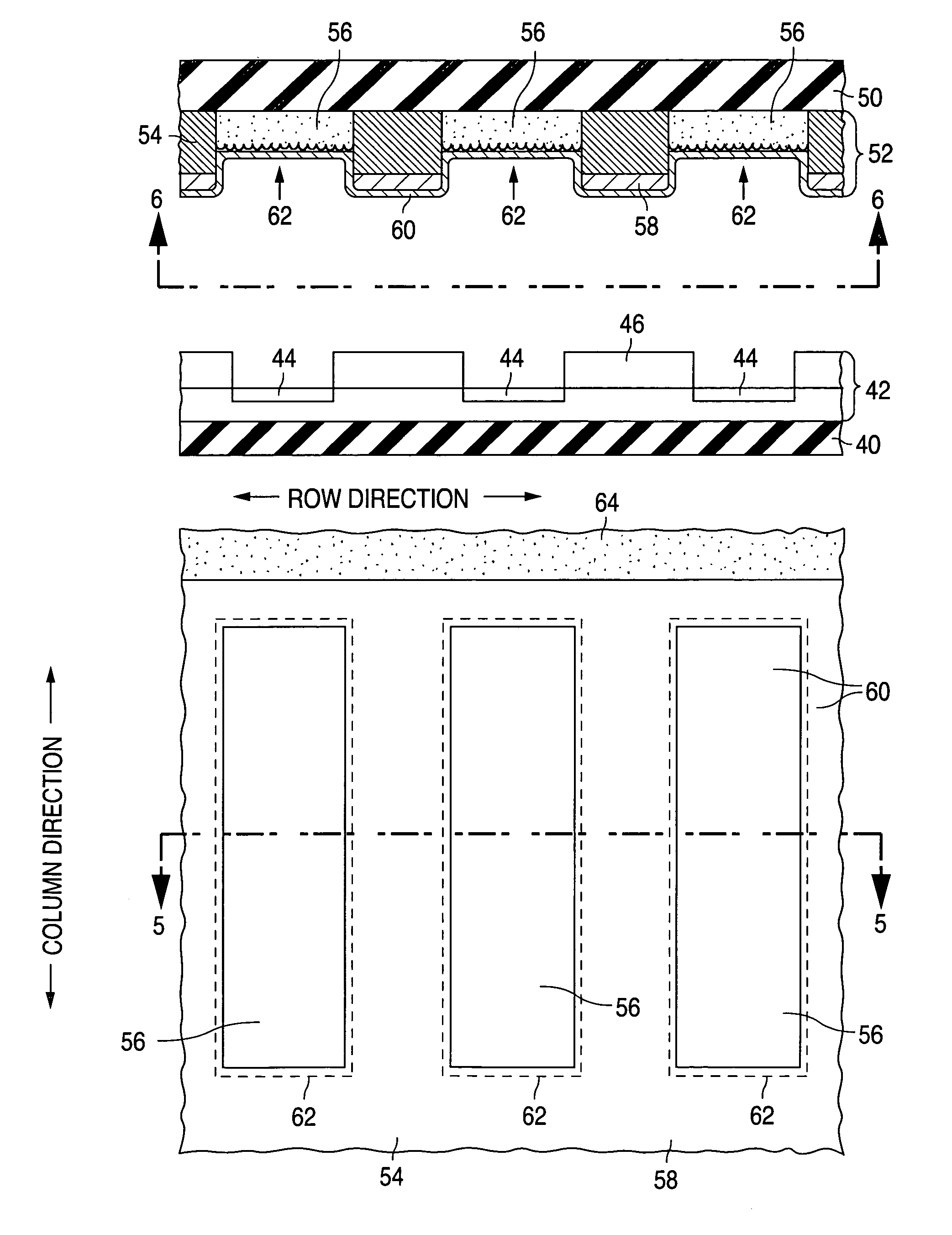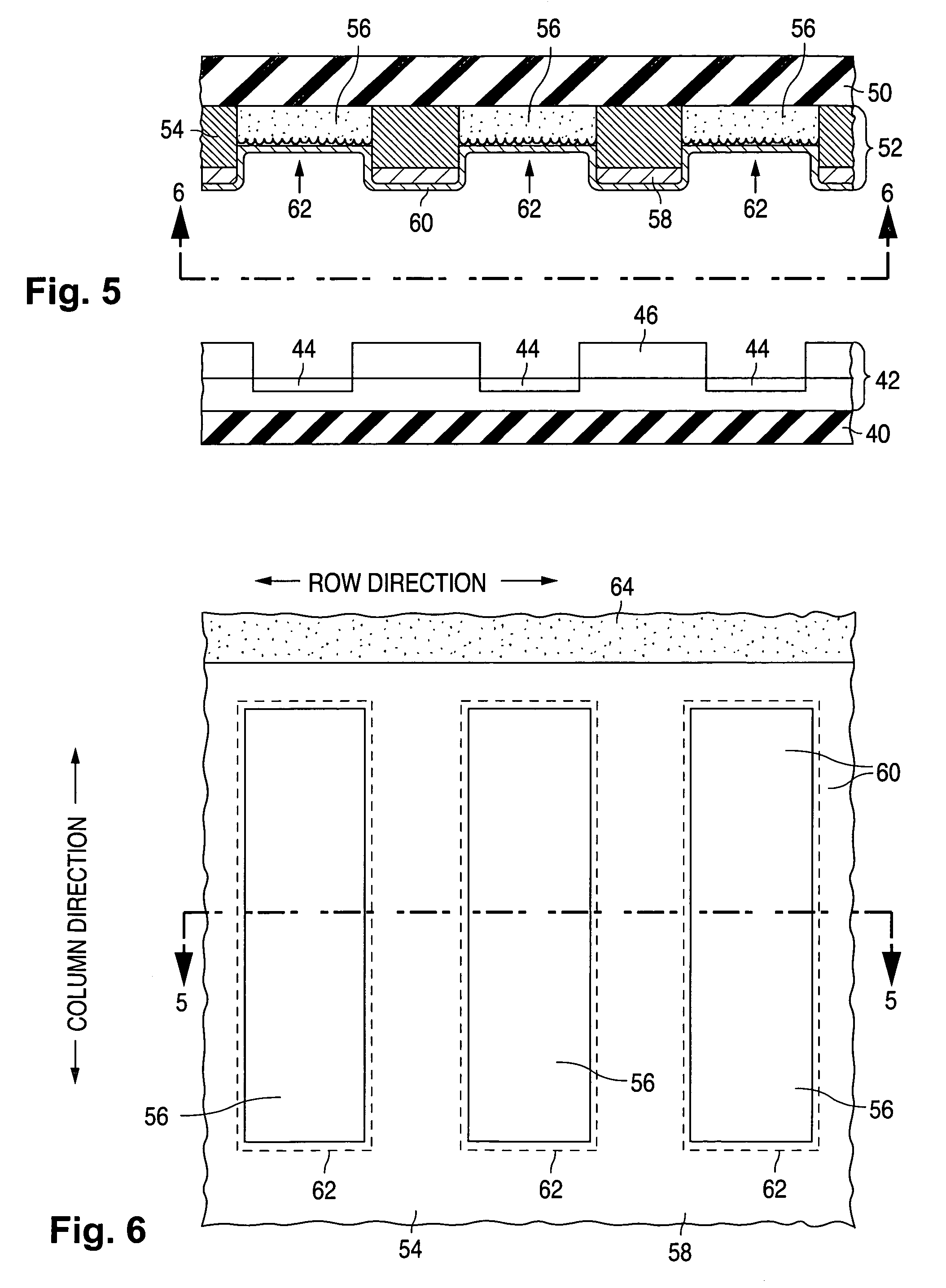Light-emitting and electron-emitting devices having getter regions
a technology of light-emitting electrons and getters, which is applied in the direction of vacuum obtaining/maintenance, tubes with screens, discharge tubes luminescnet screens, etc., can solve the problems of reducing display life, non-uniform display brightness, and prior art devices of figs. 1–4, etc., to increase the ability of the getter material to provide this assistance, increase the thickness (or height) of the getter material, and enhance the display's performance
- Summary
- Abstract
- Description
- Claims
- Application Information
AI Technical Summary
Benefits of technology
Problems solved by technology
Method used
Image
Examples
Embodiment Construction
General Considerations
[0075]Various configurations are described below for light-emitting and electron-emitting devices provided with getter regions in accordance with the invention. Each of the electron-emitting devices operates according to field-emission principles and is often referred to here as a field emitter. When one of light-emitting devices is combined with one of the field emitters, the combination forms a field-emission display (again, “FED”).
[0076]Each of the present light-emitting devices can generally be combined with an electron-emitting device other than one of those described below. For example, each of the present electron-emitting devices can be combined with an electron-emitting device which operates according to thermal emission or another technique besides field emission. In that event, the combination of the light-emitting and electron-emitting devices is simply a flat-panel CRT display. Similarly, each of the present electron-emitting devices can be combine...
PUM
| Property | Measurement | Unit |
|---|---|---|
| electric field | aaaaa | aaaaa |
| internal pressure | aaaaa | aaaaa |
| temperature | aaaaa | aaaaa |
Abstract
Description
Claims
Application Information
 Login to View More
Login to View More - R&D
- Intellectual Property
- Life Sciences
- Materials
- Tech Scout
- Unparalleled Data Quality
- Higher Quality Content
- 60% Fewer Hallucinations
Browse by: Latest US Patents, China's latest patents, Technical Efficacy Thesaurus, Application Domain, Technology Topic, Popular Technical Reports.
© 2025 PatSnap. All rights reserved.Legal|Privacy policy|Modern Slavery Act Transparency Statement|Sitemap|About US| Contact US: help@patsnap.com



